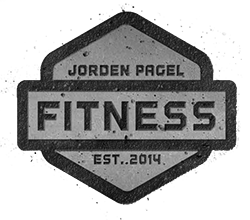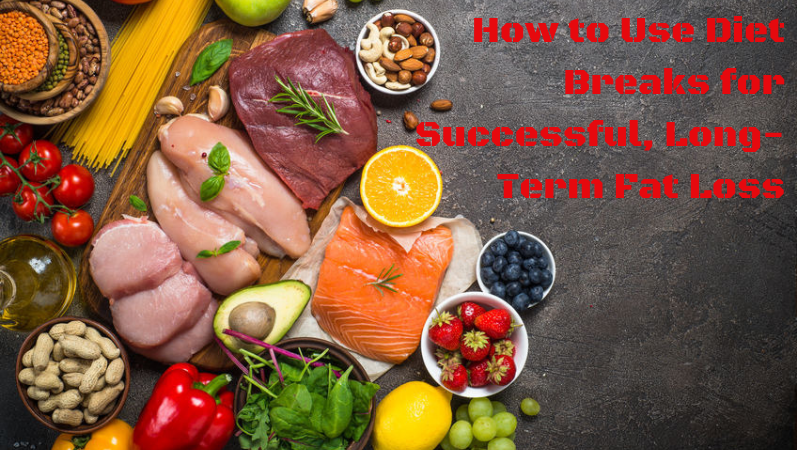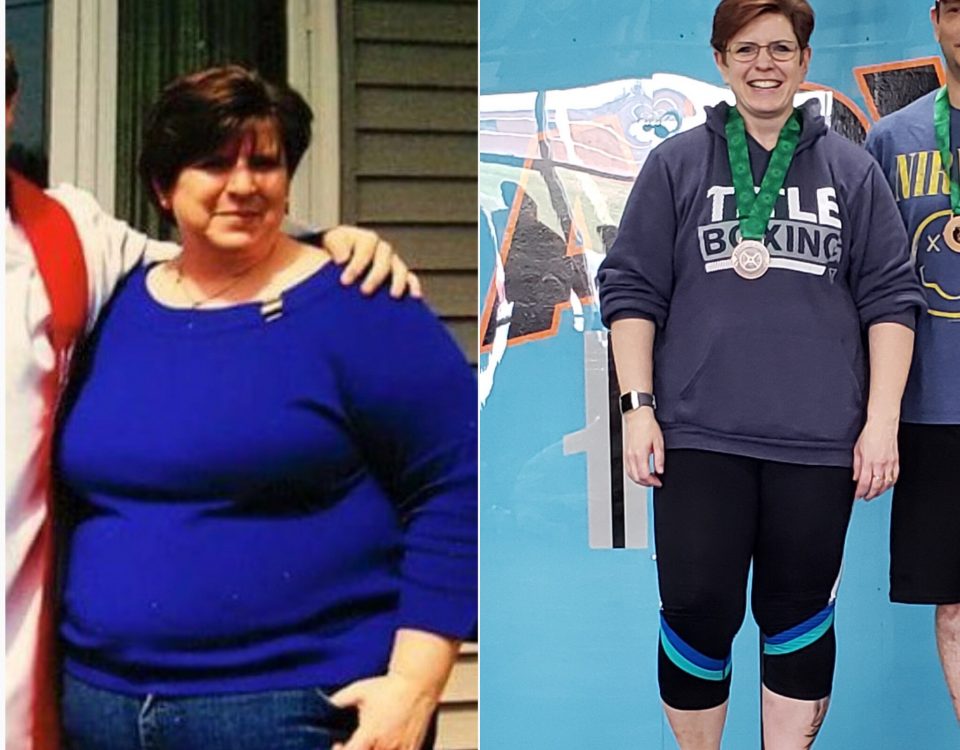10 Exercises to Badassery
Just what is a badass? According to the dictionary, a badass is: “a tough, uncompromising, or intimidating person.”
A better definition however, can be found on Urban Dictionary: “The badass carves their own path. They wear, drive, drink, watch, and listen to what they choose, when they choose, where they choose, uninfluenced by fads or advertising campaigns. Badass style is understated but instantly recognizable.”
So basically, being a badass means being yourself and doing things your way. And in a culture where everyone wants to fit in, be liked by everyone else and be recognized, being a badass probably isn’t such a bad thing.
See, a badass cares nothing about what others think of them. A badass does not need attention. They don’t need to stand out. A badass takes care of themselves first, because they know if they can’t take care of themselves, how can they take care of others.
So what does being a badass have to do with your training?
The training program of a badass closely mirrors their lives. A badass in the gym does not care about the latest exercise fad, class, or what the popular kids are doing these days. A badass trains in the way that is most beneficial to them and their body. They also look pretty badass doing it!
So how can you become a badass, or at least train like one?
The following is a list of 10 of the best fat-burning, muscle-building, body-sculpting exercises you can do in the gym. They are also pretty badass!
Incorporating one, or all of these exercises into your program will boost your results, accelerate your progress, and take you to the next level of badassery. (Yes, that is a word!)
Depending on where you train, you may not see many people performing these exercises. That’s because they’re not badass. You are!
(*Note: this is not an all-inclusive list and the exercises listed are not in any particular order. Also, this article is not intended to teach technique. I will cover that in later articles.)
I took pictures of myself performing some of these exercises. For the rest, click the links included.
1). CONVENTIONAL DEADLIFT
The Lowdown: I start with the deadlift because it is regarded by many as one of the best exercises a person can do. This is because the deadlift recruits nearly every muscle fiber in your body. It’s also my personal favorite.
A heavy deadlift not only makes you look like a badass in the gym, it also makes you look like one out of the gym. If your goal is to add slabs of muscle across your back, the deadlift will do that. If your goal is head-turning glute development (see: dat ass), the deadlift will do that too.
The deadlift also is a fantastic corrective and strength building exercise as it can help correct poor posture in the shoulders and upper-back; as well as aid in alleviating back pain by strengthening the muscles around your spine. Additionally, the deadlift is a basic human movement. Anytime you pick something up off the ground, you are deadlifting.
Variations: The conventional deadlift may not be for everyone, as it does require a lot of hip mobility. The sumo and trap-bar deadlift require less hip mobility while still providing many of the benefits of the conventional deadlift.
Dumbbell and kettlebell deadlifts are great for learning movement patterns and teaching the hip hinge. Single-leg variations, either with a dumbbell, kettlebell or barbell, are fantastic for building unilateral strength and muscle development.
If you want to build a back so wide you’ll have to walk through doors sideways, my favorite variation is the snatch-grip deadlift. It requires more hip mobility because you have to get lower in order to get a wider grip on the bar, but it’s great for building the upper back.
Badass Level:
Badass: Bodyweight x 1.3
Keep Your Distance: BW x 2
Don’t Mess With Me: BW x 2.5
2). BARBELL BACK SQUAT
The Lowdown: The squat is really the only exercise that rivals the deadlift in terms of total body effectiveness. While mainly thought of as a lower body leg exercise, the squat is great for glute development and strength, and is also a fantastic core builder. In fact, novice lifters will get a great deal of ab work and development just from squatting alone. Squats also help build explosive power required by many athletes.
Like the deadlift, the squat is a basic human movement, so it just makes sense that you would incorporate squats into your training program. Also like the deadlift, the squat is great for building large amounts of muscle very quickly.
Squatting will also help improve hip mobility, increase testosterone production and help burn more fat because of the large amount of muscle involved in performing the movement.
Variations: My favorite variation after the back squat is the front squat. The movement is basically the same, except the load is placed in front, over the chest and shoulders. This recruits the quadriceps more than the hamstrings and glutes, as well as requiring more core stability.
Other good variations include dumbbell squats and goblet squats with a dumbbell or kettlebell held at chest level. These movements are great for assessing and teaching the squat pattern, as well as rehab and recovery work.
Badass Level:
Badass: Bodyweight x 1.1
Keep Your Distance: BW x 2
Don’t Mess With Me: BW x 2.3
3). PULL-UPS/CHIN-UPS
The Lowdown: There are few better measures of upper body strength than the pull-up. Pull-ups not only work almost every muscle in the back, but if you see someone who can do double-digit, dead-hang pull-ups you can bet they will have some impressively developed arms as well.
To be clear, a pull-up is done with your hands facing away from you. The main emphasis here will be on the back. A chin-up is done with your hands facing towards you. This is still going to work your back but it also places more emphasis on the biceps.
Variations: Pull-ups are not easy. And the bigger you are, the stronger you need to be in order to perform one, because the more weight you need to be able to pull up.
For beginners who can’t do a full pull-up, they would be best served doing assisted pull-ups, either on a machine or using bands. Negative pull-ups are also a great beginner variation. Jump up, grab the bar, and hold yourself there for as long as you can. This helps build strength in the upper back using your own body weight.
For those more advanced at the pull-up, try adding weight to make it more challenging. Some gyms have belts that you can hook weight plates too. Otherwise, grab a dumbbell and hold it between your feet as you perform the exercise.
Badass Level:
Badass: Men – 10 reps w/ BW, Women 5 reps w/ BW
Keep Your Distance: Men – 20 reps w/ BW, Women 10 reps w/ BW
Don’t Mess With Me: Men – 25+ reps w/ BW, Women 15+ reps w/ BW
4). BARBELL BENCH PRESS
The Lowdown: The favorite exercise of bros everywhere! So popular, Mondays are known as International Bench Press Day. Walk into any gym in America and there are likely more benches than any other piece of weightlifting equipment. You may think I kid, but the bench press is undoubtedly the most popular and well-known exercises in the gym.
The bench press (along with the pull-up and overhead press) is one of the best tests of true upper body strength. And just like the first three exercises on this list, it should be a staple of your program, especially if you are trying to build strength. The bench press is arguably the best exercise for chest development as well. Just do me a favor and keep your ass on the bench. No one cares how much weight you can put up if your ass is two feet in the air.
Variations: As great as the bench press is, most people would be best served limiting their time spent pressing on a flat bench. This is because of the stress that gets placed on the shoulder joints. To combat this, angle the bench to 15-30 degrees. This is less than the traditional incline bench press and takes the stress off the shoulders while still emphasizing the pecs.
Another way to reduce stress on the shoulders and really isolate the pecs is to perform a dumbbell bench press. The use of dumbbells allows the arms and shoulders to move in a more natural motion, reducing the risk of injury.
Badass Level:
Badass: Bodyweight
Keep Your Distance: BW x 1.4
Don’t Mess With Me: BW x 1.9
5). STANDING BARBELL OVERHEAD PRESS
The Lowdown: The overhead press is actually my preferred pressing exercise over the bench press. While it doesn’t do as much for pure chest development like the bench press, it does more to develop your upper body strength because it recruits muscles from your chest, shoulders, back, arms and core more so than the bench press.
If you want to improve your performance on any other upper body exercise, the overhead press will help. Plus, there isn’t much more badass than throwing up a bunch of weight over your head.
Variations: The press has a number of variations. The seated barbell press takes your core out of the equation, so it isolates your shoulders, arms and chest more. Because of this, you can’t use as much weight.
Another barbell variation is the push press. This is similar to the standing barbell press, except that before you press the bar, you dip down and use more leg drive to hoist the weight. Consequently, you can use more weight, but you use less pure shoulder strength because of the addition of your legs to the movement.
Pressing can also be done with dumbbells or kettlebells. Because of the lack of a straight bar, a DB or KB will place less stress on the elbow, which can become irritated from excessive overhead pressing.
Badass Level:
Badass: Bodyweight x 0.5
Keep Your Distance: BW x 0.75
Don’t Mess With Me: BW x 1.1
6) TWO-ARM KETTLEBELL SWING
The Lowdown: Kettlebell swings have become more popular in recent years, but have actually been around for quite some time. In addition to looking pretty badass, swings actually have a lot of benefits. First, swings are great for teaching the hip hinge, a movement required to perform a proper deadlift.
Second, swings help build strength across your back, glutes and hamstrings, providing explosiveness and added flexibility. Plus, swings are also a great conditioning tool. At the end of your workout, do :30 seconds of swings, followed by :30 seconds of rest and repeat for 8 rounds. That will really get your heart rate up!
Variations: A great swing variation is a one-arm swing. You get all the benefits of the two arm swing, plus additional core work, as you have to work to keep your torso from rotating because of the offset weight.
If your gym doesn’t have kettlebells, you can still do swings. Grab a dumbbell at one end and swing it like a kettlebell.
Badass Level:
There really are no strength or performance standards for KB swings, but just doing them on a regular basis makes you a badass in my book!
7). FARMER’S WALK/LOADED CARRY
The Lowdown: Few exercises are more well-rounded than the farmer’s walk. Renowned author and strength coach Dan John said, “The loaded carry does more to expand athletic qualities than any other single thing I’ve attempted in my career as a coach and an athlete.” If you want to improve strength, athleticism and conditioning all in one movement, then the farmer’s walk is what you should be doing.
The farmer’s walk is pretty simple. Pick up something heavy and walk with it. Farmer’s walks work your legs, core, arms, back and of course, your grip strength. They can be performed for distance, time or a combination of both. Varying the weight you carry will also affect your conditioning and strength levels.
Variations: The farmer’s walk can be performed a few different ways. The standard way is with weight in each hand. This can be done with weight plates, dumbbells or kettlebells (assuming your gym has matching sets). The other way is with special farmer’s walk implements that allow you to add as much weight as you want.
Other ways to do the farmer’s walk included the one-arm farmer’s walk. In this variation, like it sounds, you only carry weight with one arm. The added challenge to this is you need to stabilize your core even more to remain in a neutral, upright position.
Another variation is the one-arm overhead farmer’s walk. This variation also requires core stability but also brings into the equation added shoulder and upper back stability work, which you need to keep the weight centered overhead.
Badass Level:
Badass: Bodyweight x 0.75
Keep Your Distance: BW
Don’t Mess With Me: BW x 1.2
8). BARBELL HIP THRUST
(I figured you didn’t want to see me doing hip thrusts, so I’ll let the glute guy himself, Bret Contreras, demonstrate)
The Lowdown: “Is this the weird exercise where it looks like you’re having sex with the bar?”
Yeah, it’s the weird exercise where it looks like you’re having sex with the bar.
But, despite being overtly sexual in nature, the hip thrust is actual one of, if not the best exercise for glute and hamstring strength and development. So regardless if you’re a man or woman, if you want “dat ass” you should be hip thrusting.
The hip thrust also has direct carryover to some of the exercises we talked about above. The hip thrust builds strength in the legs and glutes, which will help in bringing up your squat and deadlift. Just NEVER make eye contact with anyone while hip thrusting. Things could get awkward.
Variations: There are numerous hip thrust variations. If you are not able to perform a barbell hip thrust, start by using a weight plate or dumbbell and placing it across your lap. A band also works well for providing resistance. Single-leg variations are also great for developing unilateral strength and size. Using a barbell, weight plate or dumbbell, perform a set for each leg, really focusing on squeezing your glutes at the top.
Badass Level:
Badass: Bodyweight
Keep Your Distance: BW x 1.5
Don’t Mess With Me: BW x 2
9). LUNGES
The Lowdown: Lunges are a fantastic single-leg exercise that help build unilateral strength. And much like the squat and deadlift, they mirror everyday movements. Going up and down stairs, or just walking in general are all forms of a lunge.
Lunges are also great for building core stability because they require you to keep your torso upright while the lower half of your body is in an offset and sometimes awkward position.
Variations: There are tons of lunge variations. The standard one is the walking lunge. This is done simply by extending one leg out into the lunge position (as shown above), and then repeating with the other leg. You can add weight to this by holding a dumbbell, kettlebell or weight plate in front of your chest, or holding a dumbbell in each hand.
For added difficulty and strength training, position a barbell on your back like you were going to squat, but perform a walking lunge instead. This variation requires extra balance and stability.
For an extra level of badassery, try the rear-foot elevated split squat. This allows you to get deeper than a regular lunge, making it more of a lunge/squat hybrid. You can also change the position of the front foot target the hamstrings or the quads.
Badass Level: (Your lunge strength is going to depend a lot on your strength in the compound lifts, like squat and deadlift, but here are some decent measures).
Badass: Bodyweight
Keep Your Distance: BW x 1.25
Don’t Mess With Me: BW x 1.5
10). SLED WORK
The Lowdown: While not your typical resistance training exercise, the sled is a fantastic conditioning tool and works your legs like almost nothing else. Just load it up with weight and go!
The main thing about sled work that makes it so useful is that it lacks an eccentric component. In any lift there are two movements: the eccentric movement, which is the lowering of the weight, and the concentric movement, which is the raising of the weight.
The eccentric portion of a lift is where most of the muscle damage occurs, making it the most stressful. Since sled work lacks the eccentric component, that means you can do more work without beating up your muscles as much as you would if you were squatting or deadlifting.
Variations: A sled can be used a number of different ways. The two main ways are pushes and pulls. With a push, your glutes, quads and calves will all be worked. With a pull, more emphasis is placed on just the quads and calves. Grip work can be added by holding onto the sled straps while you pull.
Badass Level:
Lets face it, if you are in the gym, pushing or pulling a sled loaded down with weight, you’re pretty badass!
BONUS: ANYTHING WITH CHAINS
The Lowdown: Chains are fantastic. And pretty badass! The main point of training with chains is to increase the resistance through the lift. The way chains work is they decrease the amount of weight you are lifting as you lower the bar, and increase the weight as you raise it.
Take the squat for example. When you un-rack the bar there may be none or only a few links of the chains touching the ground, depending on how tall you are. As you squat down, more of the chain will be resting on the ground, reducing the weight on your back. As you stand back up, the resistance will increase as the chains rise, requiring you to produce more force the closer you get to the top.
Training with chains benefits you in a couple of ways. One it helps you work through sticking points by forcing your muscles to keep firing all the way through the lift. Second, it helps you build speed in a lift. Speed is an essential component of power. As a lifter or athlete, to be able to produce the most power, you need to be able to move as quickly as possible through a lift or movement. Chains will train this.
Variations: In addition to barbell exercises, chains can also be used to add extra resistance to bodyweight exercise. Hang a set of chains over your shoulders while performing pull-ups, push-ups, rows or dips to add another level of difficulty to the exercise. And you’ll look pretty badass in the process!
Badass Level:
MAXIMUM!!
So there you have it. Ten (or eleven) of the most beneficial and badass exercises you can do in the gym. Any well-designed resistance training program is going to incorporate one or all of these exercises, in one variation or another. And I promise that you will not only feel like a badass performing these exercises, but you will look like one too!
What’s your favorite exercise? Share it in the comments below!

















